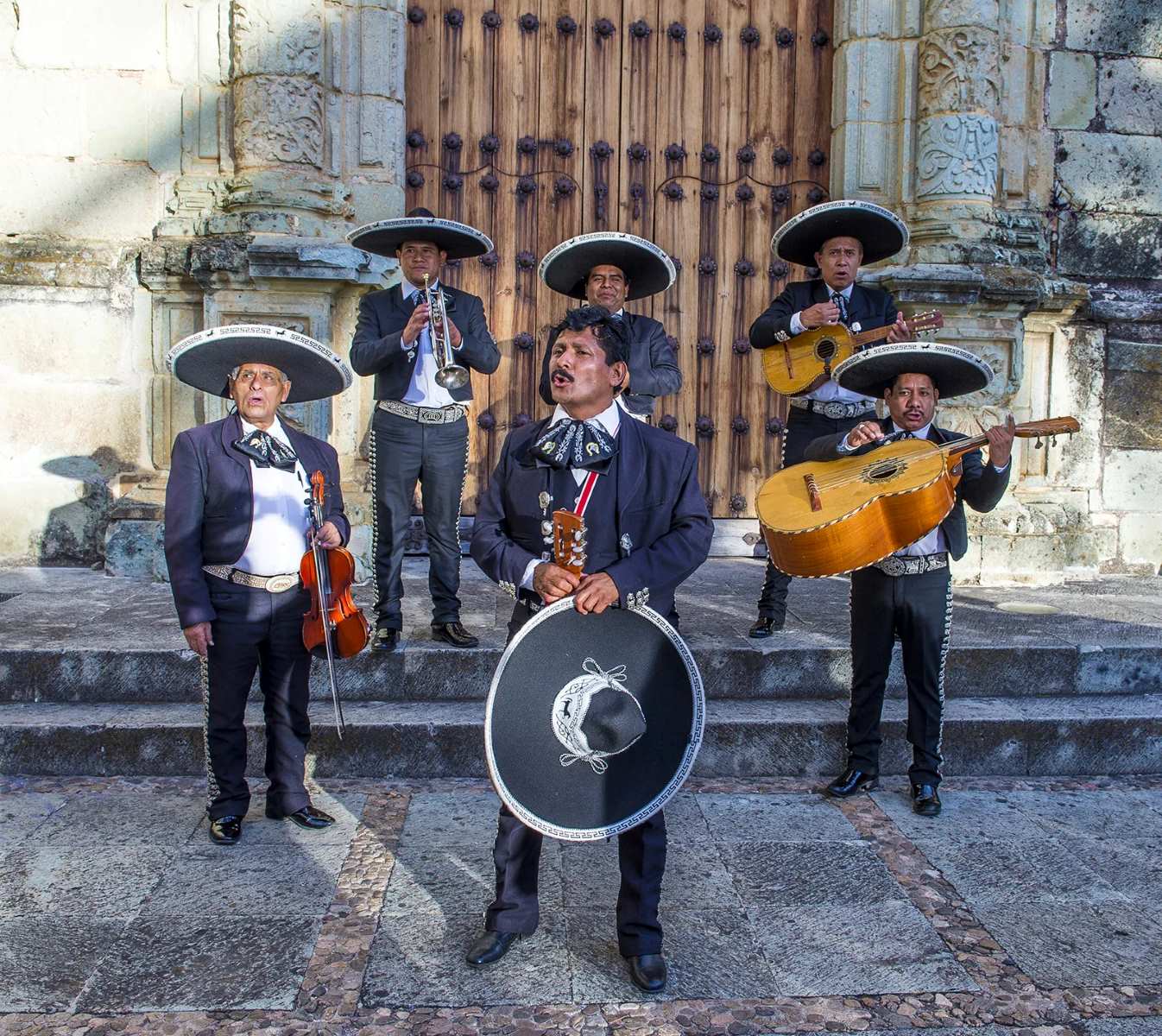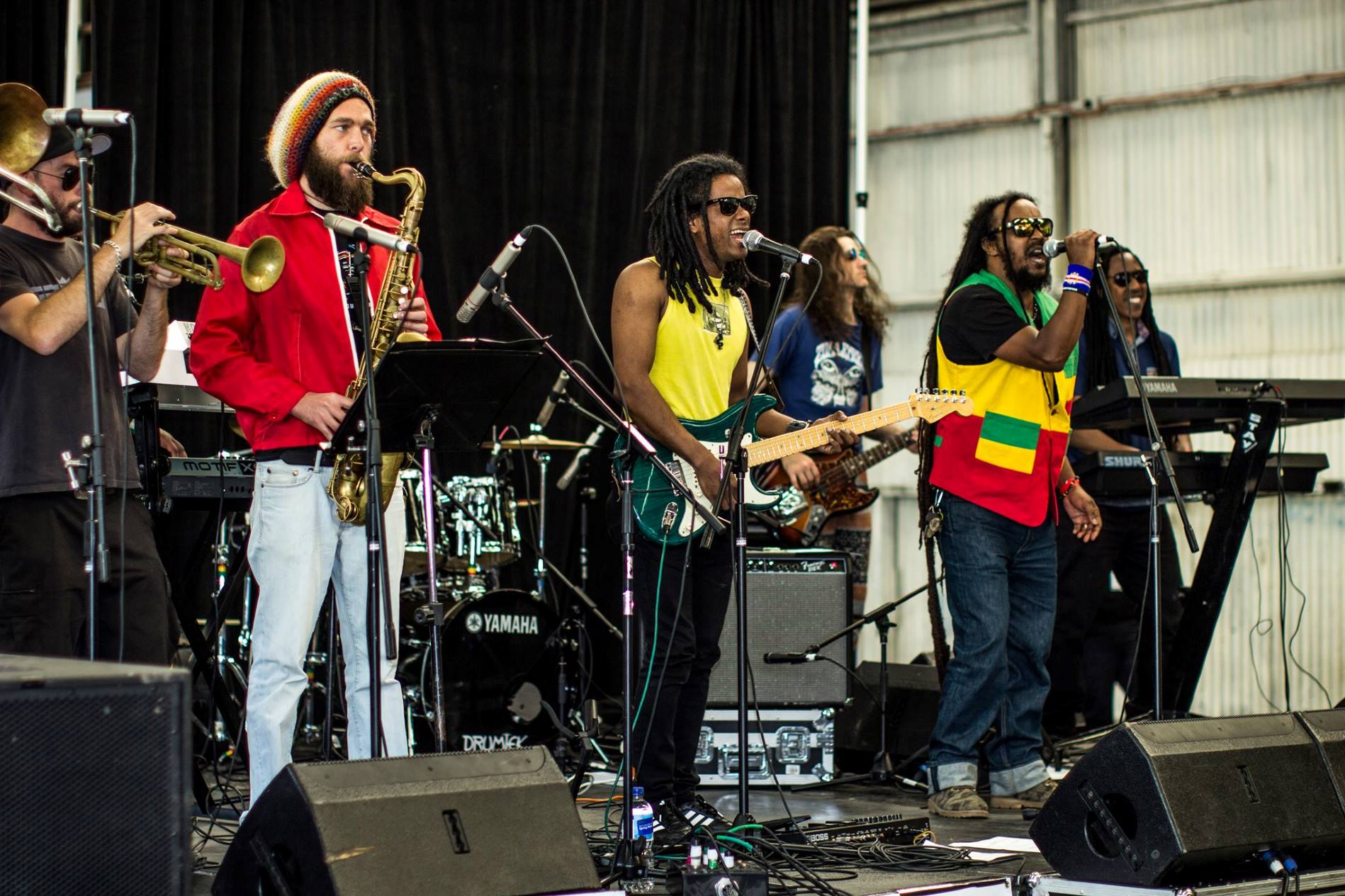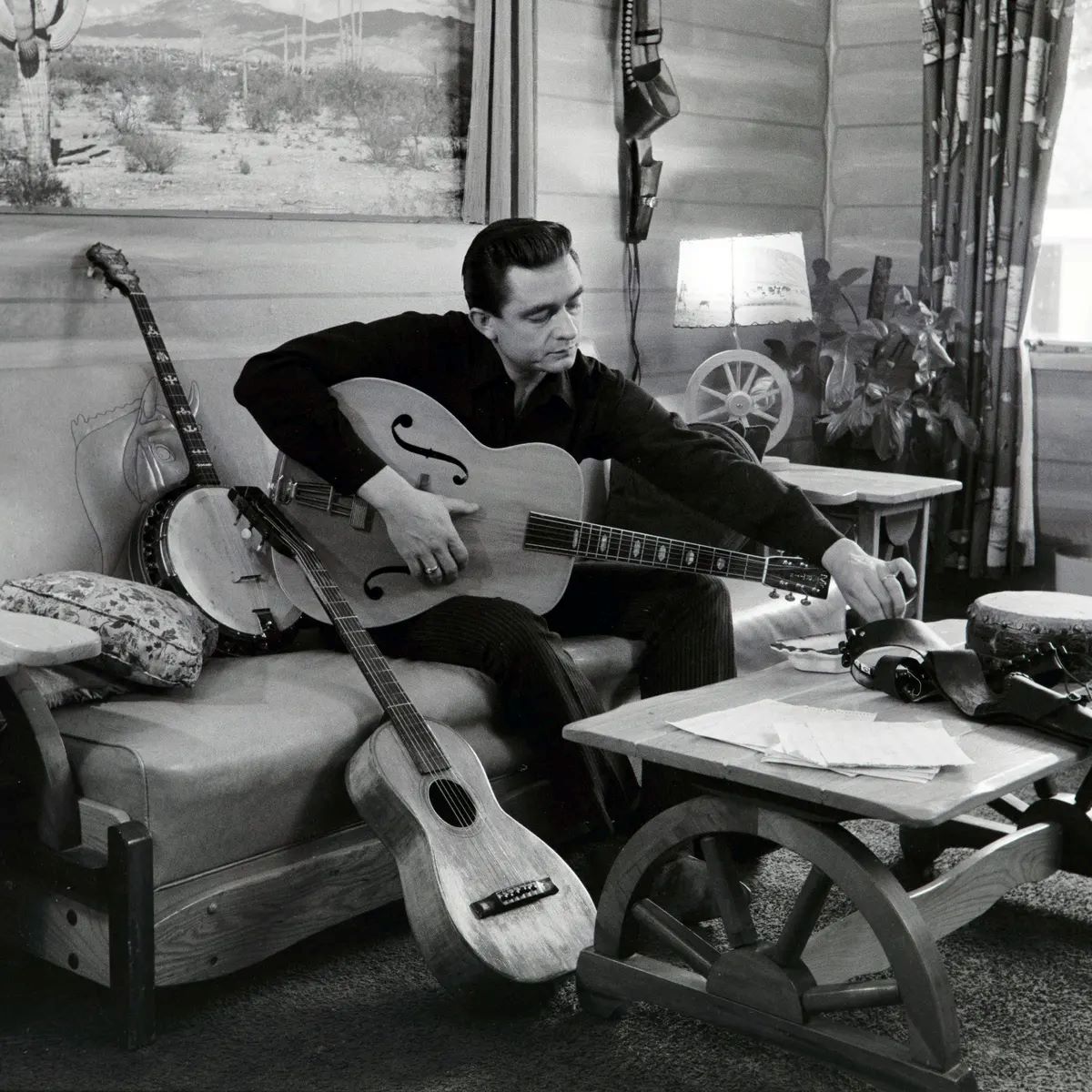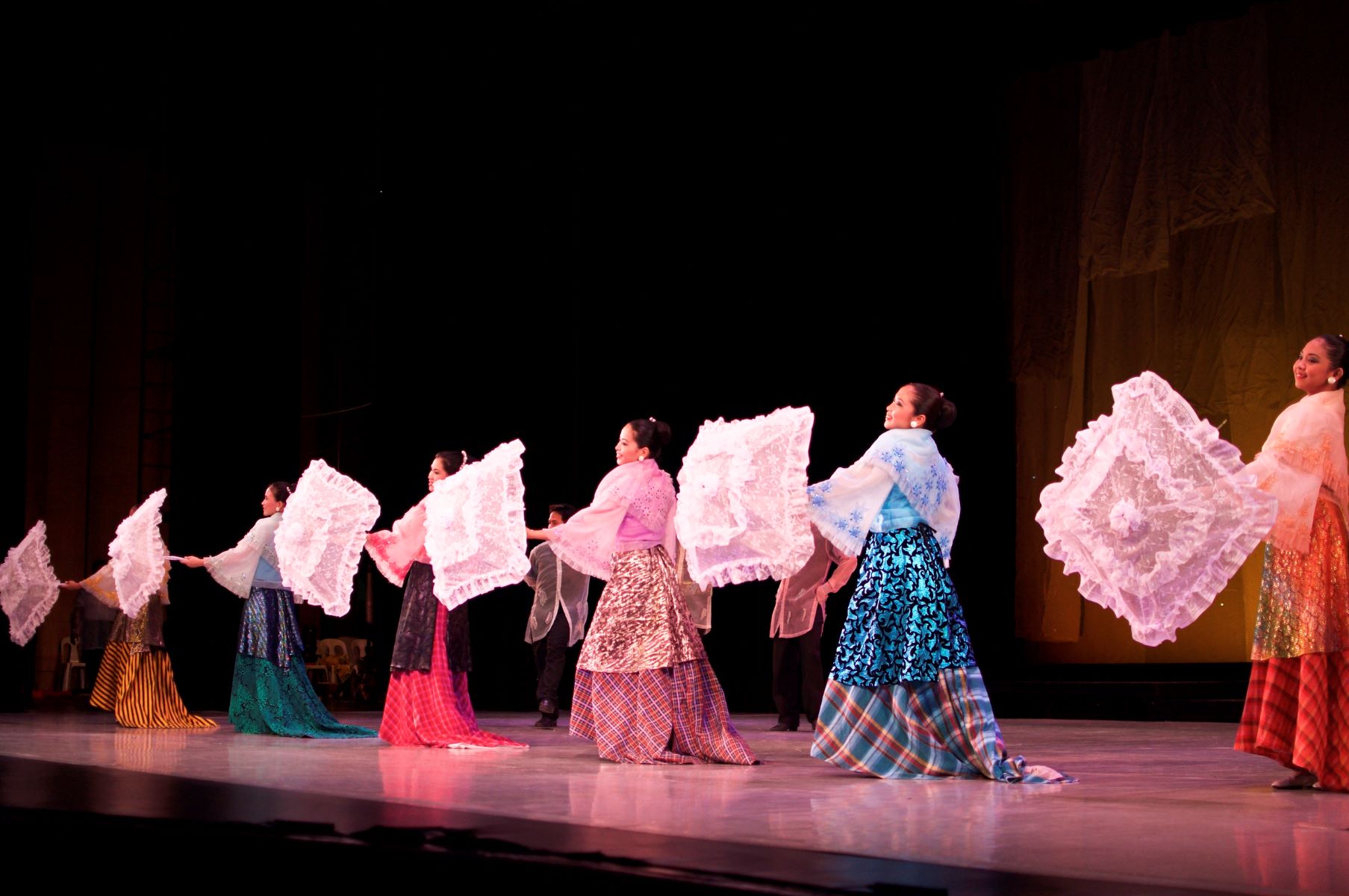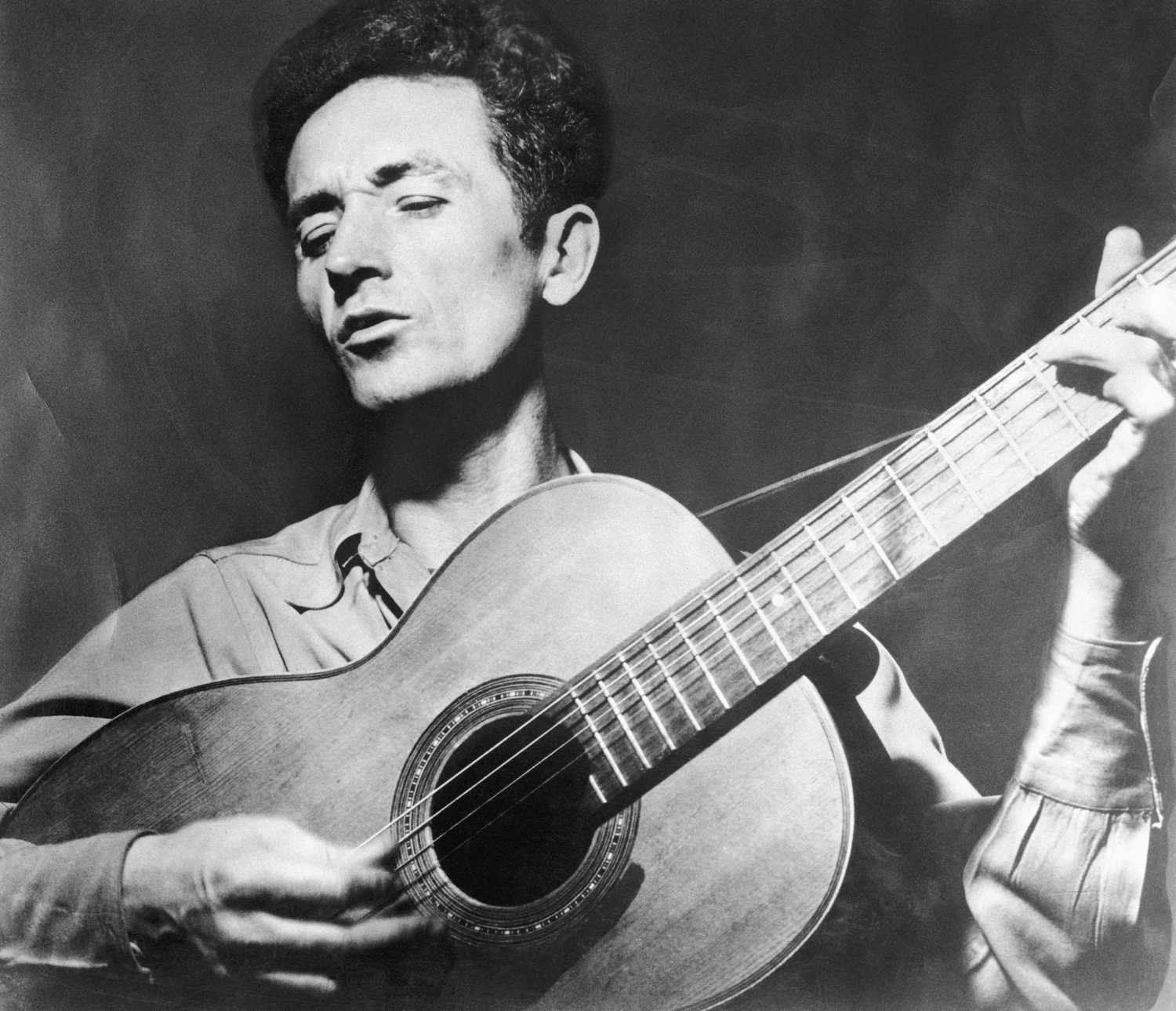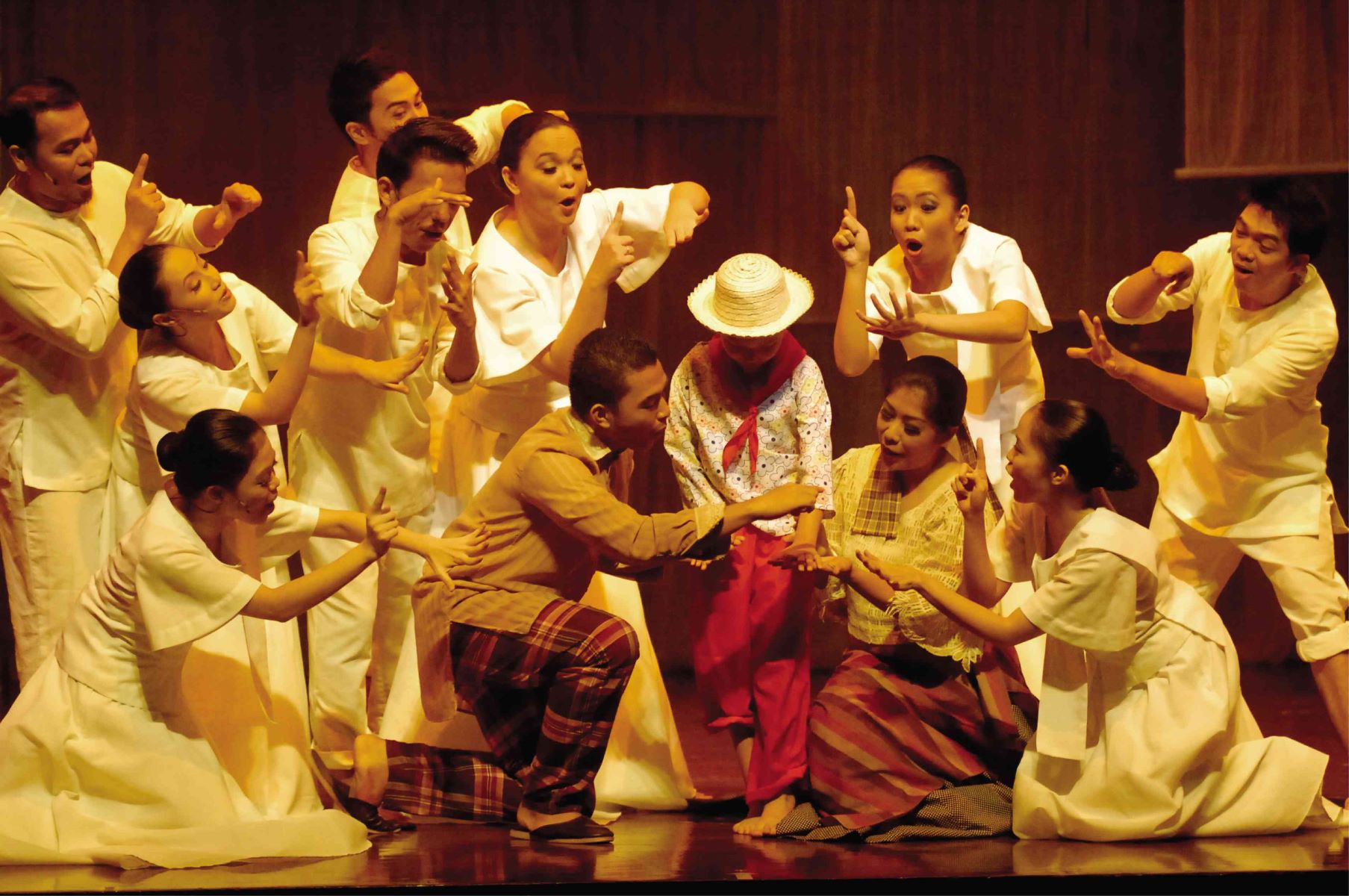

Folk
What Is Jamaican Folk Music
Modified: February 15, 2024
Learn about the vibrant and captivating Jamaican Folk music, known for its rich heritage and traditional rhythms. Explore the roots of this timeless genre and its significance in Jamaican culture.
(Many of the links in this article redirect to a specific reviewed product. Your purchase of these products through affiliate links helps to generate commission for AudioLover.com, at no extra cost. Learn more)
Table of Contents
Introduction
Jamaican folk music is a rich and vibrant cultural treasure that has deep roots in the island’s history. This unique genre of music is a reflection of Jamaica’s diverse heritage, blending indigenous rhythms with influences from Africa, Europe, and the Caribbean. It is a powerful expression of the struggles, triumphs, and everyday lives of the Jamaican people.
The origins of Jamaican folk music can be traced back to the time of slavery, when African slaves were brought to the island. These enslaved individuals brought with them their own musical traditions, which merged with the music of the indigenous Taino people and the European influences of colonizers.
Over the years, Jamaican folk music has evolved and adapted, becoming a vibrant and dynamic genre that continues to resonate with people around the world. It has influenced other popular genres such as reggae, dancehall, and ska, and its impact can be felt in the musical landscape both in Jamaica and internationally.
One of the distinguishing characteristics of Jamaican folk music is its emphasis on storytelling. Through lyrics and melodies, folk songs explore a range of themes including love, social issues, spirituality, and everyday experiences. The lyrics often tell stories about historical events, legendary figures, or comment on contemporary social and political issues, providing a unique insight into Jamaican culture and society.
Instruments such as the banjo, guitar, maracas, and drums are commonly used in Jamaican folk music, and the rhythms and melodies are often infectious and catchy. The music is known for its lively and energetic nature, reflecting the spirit and zest for life that is deeply ingrained in Jamaican culture.
Jamaican folk music is not only a form of entertainment; it is also a means of preserving and celebrating Jamaican heritage. It has played a significant role in shaping the identity of the Jamaican people, providing a sense of community and pride in their cultural roots. Today, efforts are being made to preserve and revitalize Jamaican folk music, ensuring that future generations can continue to appreciate and be inspired by this rich musical tradition.
Origins of Jamaican Folk Music
The origins of Jamaican folk music can be traced back to the time of slavery in Jamaica. When African slaves were forcibly brought to the island, they carried with them the rich musical traditions of their homelands. These traditions, which include the rhythmic beats and call-and-response singing style, laid the foundation for what would later become Jamaican folk music.
The music of the indigenous Taino people also played a significant role in shaping Jamaican folk music. The Taino people’s music, consisting of drumming, chanting, and dancing, blended with the African musical traditions to create a unique and distinct sound.
Furthermore, the European colonizers who arrived in Jamaica during the colonial period also contributed to the formation of Jamaican folk music. Traditional European instruments such as the guitar, fiddle, and accordion were introduced to the African and Taino music, resulting in a fusion of musical styles.
During slavery, music became a means of survival and resistance for the enslaved Africans. It was a way of communicating and preserving their culture, as well as a form of protest against their oppressive conditions. The oral tradition of storytelling through music was crucial in passing down their history and traditions from one generation to another.
As time went on, Jamaican folk music continued to evolve and adapt, influenced by various waves of migration and cultural exchanges. The arrival of indentured laborers from India and China in the 19th century brought new musical elements to the mix, further enriching the Jamaican folk music tradition.
Throughout its history, Jamaican folk music has remained deeply rooted in the everyday lives and experiences of the Jamaican people. It captures the joys, sorrows, struggles, and celebrations of the island’s inhabitants, serving as a powerful means of expressing their emotions and connecting with their cultural roots.
Today, Jamaican folk music is revered as an important part of the country’s cultural heritage and is celebrated during festivals and public gatherings. Its powerful rhythms and heartfelt lyrics continue to resonate with people both in Jamaica and around the world, serving as a testament to the enduring legacy of this vibrant musical tradition.
Influences on Jamaican Folk Music
Jamaican folk music is a rich and diverse genre that has been shaped by a multitude of influences over the years. From Africa to Europe, and from the Caribbean to the Americas, these influences have played a significant role in the development and evolution of Jamaican folk music.
One of the most prominent influences on Jamaican folk music is African music. When African slaves were brought to Jamaica during the era of slavery, they brought with them their musical traditions. These traditions, characterized by powerful rhythms, intricate drumming patterns, and call-and-response singing, became integral to the development of Jamaican folk music. The impact of African music can still be heard in the percussive elements and vocal styles of Jamaican folk songs today.
European influences also played a crucial role in shaping Jamaican folk music. The colonization of Jamaica by the Spanish, British, and other European powers introduced new musical instruments, such as the guitar, fiddle, and accordion, to the island. These instruments were quickly assimilated into the local music scene and became an integral part of Jamaican folk music. European musical styles, such as ballads and reels, also influenced the melodies and lyrical structures of Jamaican folk songs.
The Caribbean region itself has had a significant impact on Jamaican folk music. The cultural exchanges and interactions between Jamaica and other Caribbean islands have resulted in the blending of musical styles and traditions. For instance, the influence of calypso and mento music from neighboring islands can be heard in the lively and upbeat rhythms of Jamaican folk songs.
Additionally, the arrival of indentured laborers from India and China in the 19th century brought yet another layer of influence to Jamaican folk music. The distinctive melodies and instruments, such as the sitar and tabla from India, as well as the erhu from China, found their way into the musical fabric of Jamaica. This fusion of musical elements added a unique flavor to Jamaican folk music, further diversifying its sound.
Furthermore, the influence of other popular music genres, such as jazz, blues, and reggae, has also left its mark on Jamaican folk music. Jamaican artists have often incorporated elements from these genres into their folk songs, creating a fusion of styles that keeps the tradition dynamic and relevant.
Overall, the influences on Jamaican folk music have been vast and varied, creating a truly unique and eclectic genre. It is this diverse blend of African, European, Caribbean, and other cultural influences that makes Jamaican folk music such a vibrant and captivating form of expression.
Characteristics of Jamaican Folk Music
Jamaican folk music is known for its distinct characteristics that set it apart from other genres. These characteristics not only define the musical style but also reflect the cultural heritage and traditions of the Jamaican people.
Rhythm is a fundamental element of Jamaican folk music. The music is characterized by lively and infectious rhythms that are deeply rooted in African and Caribbean traditions. These rhythms often feature syncopation and polyrhythms, creating a vibrant and energetic sound that is hard to resist. The rhythmic elements of Jamaican folk music are often carried by percussive instruments such as drums, maracas, and tambourines.
Another hallmark of Jamaican folk music is its strong emphasis on storytelling. Folk songs serve as a means of passing down cultural history and preserving the collective memory of the Jamaican people. The lyrics of these songs often tell stories about historical events, legendary figures, or comment on contemporary social and political issues. They provide a window into Jamaican culture, offering insights into the struggles, joys, and aspirations of the people.
The melodies of Jamaican folk music are often simple and melodic, making them easy to sing along and remember. Many folk songs have a catchy and memorable quality that allows them to be passed down through generations. These melodies are often influenced by the African and European traditions that have shaped Jamaican music, resulting in a unique fusion of styles.
Call-and-response singing is another significant characteristic of Jamaican folk music. This style involves a lead singer or group singing a phrase or line, and the audience or other singers responding with a corresponding line or phrase. This interactive style of singing creates a sense of community and participation, drawing the listeners into the music and creating a shared experience.
Jamaican folk music is deeply connected to the cultural rituals and celebrations of the island. It is often performed at religious ceremonies, weddings, funerals, and other special occasions. The music serves as a way to express emotions, celebrate milestones, and bring people together in joyous or solemn moments.
The themes explored in Jamaican folk music are diverse and reflect a range of human experiences. Love, spirituality, social issues, and everyday life are common themes found in the lyrics of folk songs. These songs provide a glimpse into the social and cultural fabric of Jamaican society and offer a reflection of the people’s values and concerns.
Instrumentation in Jamaican folk music varies but commonly includes acoustic guitars, banjos, maracas, drums, and other percussion instruments. These instruments add depth and texture to the music, enhancing the rhythmic and melodic elements.
Overall, the characteristics of Jamaican folk music, from its infectious rhythms to its storytelling lyrics, create a vibrant and distinctive musical tradition. It is a reflection of the resilience, creativity, and rich cultural heritage of the Jamaican people.
Instruments Used in Jamaican Folk Music
Jamaican folk music is known for its rhythmic and lively sound, which is brought to life by a variety of instruments. These instruments play a vital role in creating the unique and vibrant melodies that define Jamaican folk music.
One of the most iconic instruments used in Jamaican folk music is the acoustic guitar. The guitar provides a melodic foundation and rhythm for the music, with its strings being strummed or plucked to produce both harmonies and percussive elements. The rhythmic patterns created by the guitar often drive the energy of the music.
The banjo is another important instrument in Jamaican folk music. Its distinctive twangy sound adds a rich texture to the music. The banjo’s strings are plucked or strummed, producing lively and spirited melodies that complement the rhythmic elements of the music.
Percussion instruments also play a significant role in Jamaican folk music. Drums, such as the conga drum, bongo drum, or djembe, provide the rhythmic foundation and drive the energy of the music. The maracas, a pair of handheld rattles, add a percussive and pulsating element to the music. Other percussion instruments, such as tambourines and claves, are also commonly used to enhance the rhythmic complexity of Jamaican folk music.
Traditional African instruments have also found their way into Jamaican folk music. The kalimba, a thumb piano, produces delicate and enchanting melodies that add a unique flavor to the music. The shekere, a percussion instrument made of a gourd with beads or shells woven into a net covering, produces rattling sounds that contribute to the rhythmic intricacies of the music.
In addition to these instruments, Jamaican folk music often incorporates elements of vocal harmonies and call-and-response singing. The human voice, with its expressiveness and emotive qualities, adds depth and soul to the music. Singers use their voices to tell stories, convey emotions, and engage the audience in a participatory experience.
It is important to note that the specific instruments used in Jamaican folk music can vary depending on the region and the particular style of folk music being performed. In some cases, modern instruments such as keyboards and brass instruments may also be incorporated to create new and innovative sounds.
Overall, the instruments used in Jamaican folk music contribute to its distinctive and vibrant character. From the guitar and banjo to percussion instruments and traditional African instruments, each instrument adds its own unique voice to the rich tapestry of Jamaican folk music.
Popular Jamaican Folk Music Genres
Jamaican folk music is a diverse genre that encompasses various styles and regional influences. From mento to quadrille, these genres showcase the rich cultural heritage and traditions of the Jamaican people. Each genre carries its own distinct characteristics and reflects the unique history and experiences of different Jamaican communities.
One of the most well-known genres of Jamaican folk music is mento. Often considered the precursor to reggae, mento originated in the early 20th century and is characterized by its lively rhythms and humorous lyrics. Mento songs often feature acoustic guitar, banjo, maracas, and other percussion instruments, creating a vibrant and infectious sound. Mentos’ themes typically revolve around everyday life, social commentary, and jovial storytelling.
Another popular Jamaican folk music genre is ska. Originating in the 1960s, ska combines elements of mento, jazz, R&B, and American rock ‘n’ roll. Known for its upbeat tempo and prominent horn section, ska became a significant precursor to reggae and influenced the development of other Jamaican musical styles. Its energetic and danceable rhythms make ska a fan favorite, both in Jamaica and around the world.
Quadrille is another genre deeply rooted in Jamaican folk traditions. It is a form of traditional dance music that evolved from European quadrilles, brought to Jamaica during the colonial era. The music is often played by a live band, with instruments like the fiddle, banjo, accordion, and drums. Quadrille accompanies traditional social dances and is still performed in rural communities during special occasions and festivals, keeping this colorful tradition alive.
Jonkunnu, also known as John Canoe, is a festive Jamaican folk music genre that originated during slavery and is performed during Christmas and other festive occasions. It features a combination of African drumming, dancing, and singing. Participants dress in colorful costumes and masks and move through the streets in lively parades. Jonkunnu serves as a form of celebration, cultural expression, and collective storytelling, showcasing the resilience and creativity of the Jamaican people.
Revival music is a unique and spiritual genre within Jamaican folk music. It has strong ties to Jamaican religious practices, particularly the Revivalist movement. Revival music combines African rhythms, biblical lyrics, and traditional Christian hymns, creating a devotional and deeply soulful sound. The music is often accompanied by hand-clapping, foot-stomping, and singing in ecstatic and trance-like states. Revival music plays a significant role in Jamaican religious ceremonies, reflecting the spiritual beliefs and cultural heritage of the Jamaican people.
These are just a few examples of the many Jamaican folk music genres that exist. Each genre carries its own rich history, musical traditions, and cultural significance, contributing to the vibrant tapestry of Jamaican musical heritage.
Significance and Impact of Jamaican Folk Music
Jamaican folk music holds great significance and has made a significant impact on the cultural, social, and musical landscape of Jamaica and beyond. It has served as an important means of cultural expression, a tool for preserving Jamaican heritage, and has influenced numerous popular music genres.
First and foremost, Jamaican folk music has played a major role in shaping the cultural identity of the Jamaican people. Through the lyrics and melodies of folk songs, it reflects historic events, traditions, and the everyday lives of the Jamaican community. It serves as a medium through which people can connect with their roots, reinforce cultural pride, and pass down traditions from one generation to another.
Jamaican folk music has also been a source of solace and inspiration during times of struggle. It has allowed the Jamaican people to express their emotions, share their stories, and draw strength from their collective experiences. Whether through songs of resistance during slavery or anthems of unity during times of social and political unrest, folk music has served as a powerful catalyst for change and empowerment.
The impact of Jamaican folk music extends beyond its cultural significance, as it has also influenced and shaped numerous popular music genres both in Jamaica and around the world. Reggae, ska, dancehall, and even contemporary pop music bear the imprint of Jamaican folk music. The infectious rhythms, storytelling characteristics, and vibrant instrumentation have become hallmarks of Jamaican music and have propelled it onto the international stage.
Jamaican folk music has also had a profound impact on tourism in Jamaica. It has become a major attraction for visitors from all over the world who are eager to experience the island’s rich musical heritage. Festivals, concerts, and cultural events centered around Jamaican folk music draw crowds of tourists who want to immerse themselves in the rhythms, dances, and songs that embody the soul of Jamaica.
Furthermore, Jamaican folk music has served as a source of inspiration for artists and musicians globally. Its rhythms and melodies have been sampled and reimagined in music genres such as hip-hop, electronic, and world music. Jamaican artists and their folk music have left an indelible mark on the global music scene, influencing and collaborating with artists from all corners of the world.
Overall, Jamaican folk music bears immense significance as a cultural pillar of Jamaican identity. It has not only fostered a strong sense of community and pride but has also influenced popular music worldwide. Its impact on Jamaican society and its enduring legacy continue to resonate, ensuring that Jamaican folk music remains a cherished and celebrated art form for generations to come.
Preservation and Revitalization of Jamaican Folk Music
The preservation and revitalization of Jamaican folk music are of utmost importance in order to safeguard the rich cultural heritage and ensure the continued growth and appreciation of this unique musical tradition. Efforts are being made at various levels to preserve, document, teach, and promote Jamaican folk music for present and future generations.
One of the key steps taken to preserve Jamaican folk music is through formal education. Music schools, academies, and cultural institutions in Jamaica offer programs and courses that focus on Jamaican folk music. This includes the teaching of traditional instruments, vocal techniques, and the exploration of different folk music genres. By imparting knowledge and skills to aspiring musicians and students, the authentic sound and spirit of Jamaican folk music can be passed down and maintained.
Additionally, initiatives have been launched to document and archive the songs, stories, and cultural significance of Jamaican folk music. Efforts are being made to collect and record traditional folksongs, interview folk musicians, and create comprehensive databases and archives. These endeavors ensure that the valuable cultural heritage and historical narratives associated with Jamaican folk music are preserved for future generations to explore and learn from.
Public performances and cultural events play a crucial role in revitalizing and promoting Jamaican folk music. Organizing concerts, festivals, and community gatherings dedicated to showcasing Jamaican folk music allows for wider exposure and appreciation of the genre. These events often feature performances by both established folk musicians and emerging talents, creating a platform for artists to share their music and continue the tradition.
Furthermore, collaborations and cultural exchanges with international artists and organizations have contributed to the revitalization and global recognition of Jamaican folk music. Partnership projects, music festivals, and workshops have encouraged cultural dialogue, allowing Jamaican folk music to reach new audiences and gain appreciation beyond national borders.
Technology and the digital age have also played a significant role in the preservation and revitalization of Jamaican folk music. Online platforms, streaming services, and social media have provided opportunities for musicians to share their music and connect with a broader audience. Younger generations are exposed to Jamaican folk music through digital platforms, ensuring its continued relevance and reach.
Lastly, grassroots organizations and community initiatives have actively engaged in preserving and promoting Jamaican folk music at a local level. Community-driven festivals, workshops, and mentorship programs encourage the transmission of folk music traditions within communities and provide platforms for emerging folk musicians to shine.
By implementing these preservation and revitalization efforts, Jamaican folk music can be celebrated, fostered, and kept alive. The continued investment in education, documentation, performance, and community engagement ensures that this vibrant musical heritage continues to thrive and resonate with future generations.
Conclusion
Jamaican folk music is a rich and vibrant cultural tradition that reflects the island’s history, heritage, and identity. It is a genre that has evolved over centuries, blending influences from Africa, Europe, the Caribbean, and beyond. With its infectious rhythms, storytelling lyrics, and diverse instrumentation, Jamaican folk music has left an indelible mark on the world of music.
The origins of Jamaican folk music can be traced back to the time of slavery, when African rhythms and European instruments merged with indigenous Taino music, creating a unique and distinct sound. Through the years, the music has served as a powerful means of cultural expression, resistance, and storytelling for the Jamaican people.
Jamaican folk music possesses distinct characteristics such as lively rhythms, melodic simplicity, and call-and-response singing. It explores a wide range of themes and is performed on a variety of instruments including guitar, banjo, maracas, and drums. The music captures the essence of Jamaican culture, providing a window into the everyday lives, struggles, and celebrations of the people.
Jamaican folk music has made a significant impact not only in Jamaica but also on the global music scene. It has influenced and paved the way for genres such as reggae, ska, and dancehall, and its rhythms and melodies have been sampled and incorporated into music worldwide. The genre’s significance extends beyond its musical contributions, as it has served as a source of cultural pride, unity, and inspiration for the Jamaican people.
Efforts are being made to preserve and revitalize Jamaican folk music through formal education, documentation, public performances, and collaborations. Education programs teach the traditions and techniques associated with the music, while documentation ensures the preservation of its cultural heritage. Public performances and collaborations help to revitalize the genre and introduce it to new audiences.
In conclusion, Jamaican folk music is a treasure that encapsulates the spirit, history, and diversity of Jamaica. It is a reflection of the resilience, creativity, and cultural pride of the Jamaican people. Through preservation, education, and appreciation, Jamaican folk music will continue to captivate audiences, inspire musicians, and contribute to the rich tapestry of global music for generations to come.

